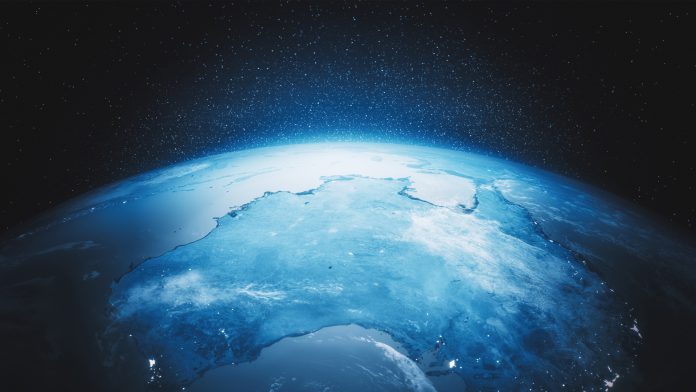A new study has found that Earth may have been engulfed by a gargantuan global ocean during the Archean Eon.
The new research, conducted by Harvard Mineral Physicists Rebecca Fisher and Junjie Dong, challenges previous theories that the volume of the Earth’s global ocean has maintained a consistent level, inferring that its size may have changed over geological time – meaning that between 4 to 3.2 billion years ago during the Archean eon, our planet resembled more of Atlantis, than Earth.
The majority of Earth’s water is stored in the oceans, with its sea level remaining relatively constant throughout the last 541 million years. Comparatively, estimates of earlier sea levels during the Archean eon are much more challenging to make due to little evidence remaining from that period. However, a secondary deep reservoir of water exists deep in the Earth’s interior, as hydrogen and oxygen attached to minerals in the mantle, which the researchers believe may provide clues as to what the ancient ocean looked like.
Over geological time, water can transfer from the surface ocean to the interior via plate tectonics – this is called water flux. Previously, scientists did not have a comprehensive understanding of the scale of the water flux, resulting in the assumption that the global ocean size had remained constant over geological time.
Fisher said: “It’s sometimes easy to forget that the deep interior of a planet is important to what’s going on with the surface. If the mantle can only hold so much water, it’s got to go somewhere else, so what’s going on thousands of kilometres below the surface can have pretty big implications.”
To conduct the study, the researchers developed a model to estimate the total amount of water that the Earth’s mantle could potentially store based on its temperature – incorporating existing data on the amounts of water that the 23 minerals can hold, which have existed at different depths and periods in the Earth’s history, relating those estimates to the volume of the surface ocean as the Earth cooled.
Their results indicate that the Earth’s mantle potentially contained less water than it does today; this is because its temperature in the Archean Eon was substantially hotter, and mantle minerals hold onto less water at high temperatures. They estimate that the mantle currently has more than 0.3-0.8 times the ocean’s mass, signifying an immense surface ocean existed during the Archean. During that period, the mantle was about 1,900-3,000 degrees Kelvin, compared to today’s temperature of around 1,600-2,600 Kelvin.
Due to a lack of knowledge of how much water can be stored in bridgmanite – the main mineral in the mantle, the researchers have reiterated that their estimates carry a level of uncertainty. However, they hope that their research of how the global ocean may have changed over time can be replicated using other planets, such as Mars.
Dong said: “Today, Mars looks very cold and dry, but a lot of geochemical and geomorphological evidence suggests that early Mars might have contained some water on the surface – and even a small ocean – so there’s a lot of interest in understanding the water cycle on Mars.”
Suzan van der Lee, a seismologist at Northwestern University, believes that the study provides valuable information for a future interstellar investigations. She said:” I think this is important for nitty-gritty seismologists like myself, who do imaging of current mantle structure and estimate its water content, but it’s also important for people hunting for water-bearing exoplanets and asking about the origins of where our water came from.”









